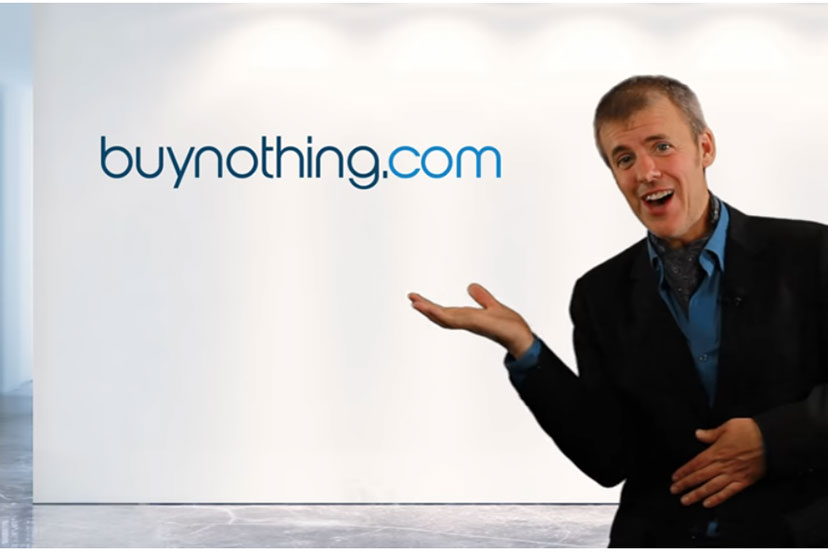I am sorely tempted to buy nothing this holiday season. The sales pitch was very compelling.
According to the website BuyNothing.com, a person can buy nothing for only $9.95 — and it comes with a multiple lifetime guarantee. Refills are only $2.50.
From their marketing video:
“We are the first and only company to sell nothing for over 20 years… and include this comprehensive ‘how to use nothing’ instruction manual with each and every purchase of nothing…”
In this world of high-stakes marketing and irrepressible consumerism, you can’t always believe the hype, but the video I viewed on BuyNothing.com makes an excellent case for the assertion that nothing will make me happy.
“Everyday, we’re being bombarded by hundreds of advertisements, all urging us to buy ‘stuff’. And regardless of what’s being sold to us, all these things are marketed to us on suggestion that they’re going to make us happy.
“The truth is, nothing will make us happy. Because nothing is the ultimate product…”
Unfortunately for many of us who might embrace the philosophy espoused in the BuyNothing.com video, a trillion-dollar advertising industry has us plugged into the belief that we will can’t feel truly satisfied unless we conclude the calendar year by maxing out our credit cards.
I’ve often struggled with holiday purchases. What do you buy for a mother-in-law who already has everything, for example? (Assuming you have a mother-in-law, which I don’t necessarily recommend.)
Or for your sister? Or your nephew?
Considering that I might see these people once a year — right around the holidays, naturally — and considering that I would be perfectly happy if we didn’t have to spend any time together… what is the right gift?
Maybe nothing?
I didn’t manage to get out of the house on Black Friday, even though I had been tempted by the advertising in our local newspaper.
“20% OFF Hats, Beanies & Scarves” at Terry’s ACE Hardware, for example. That’s an offer you don’t see every day. One good thing about beanies and scarves; they are generally ‘one size fits all’, and if they’re abominably ugly, you can leave the tags on and give them away next Christmas.
The Chamber of Commerce has been touting “Small Business Saturday”, which was last Saturday. We have a lot of small businesses in Pagosa. Even our Walmart store is relatively small; only about 98,000 square feet. But I was still in the middle of binge-watching ‘Mad Men’ so I didn’t get out of the house on Saturday, either.
On Sunday, I got terribly involved in learning everything I could about “hitting mung” — an activity that is not really an activity, but seems very popular in South Korea. “Hitting mung” is slang for “totally spacing out” … reaching a state of mental and emotional emptiness..
From the Anchorage Daily News, November 26, 2021.
‘Nothing’ is the new something in South Korea as people desperately seek refuge from the pressures of living as functioning adults in a global pandemic in a high-stress and fast-paced society with soaring real estate prices and often-grueling work schedules…
Cafes like ‘Green Lab’, a shop near Seoul Forest, have been featured in local media reports and have enjoyed a steady stream of visitors throughout the pandemic by offering spaces to heal and “hit mung.” Over tea, customers can read, write poetry, meditate or simply stare out at the trees…
Reportedly, the three time slots offered at Green Lab are snatched up quickly by people who want to sit in a cafe, doing nothing even remotely productive, and ignoring the people sitting around them.
Also in Korea, a film company has been screening movies like the one below, in theaters. (At discount prices.)
Two hours of watching a campfire, without ever having to put another log on. How did they do that?
I always thought adding wood to the fire was a necessary part of life — even when you are doing nothing; spacing out. You still had to keep the fire burning.
But times change. Nothing ain’t what it used to be.
Underrated writer Louis Cannon grew up in the vast American West, although his ex-wife, given the slightest opportunity, will deny that he ever grew up at all. You can read more stories on his Substack account.

